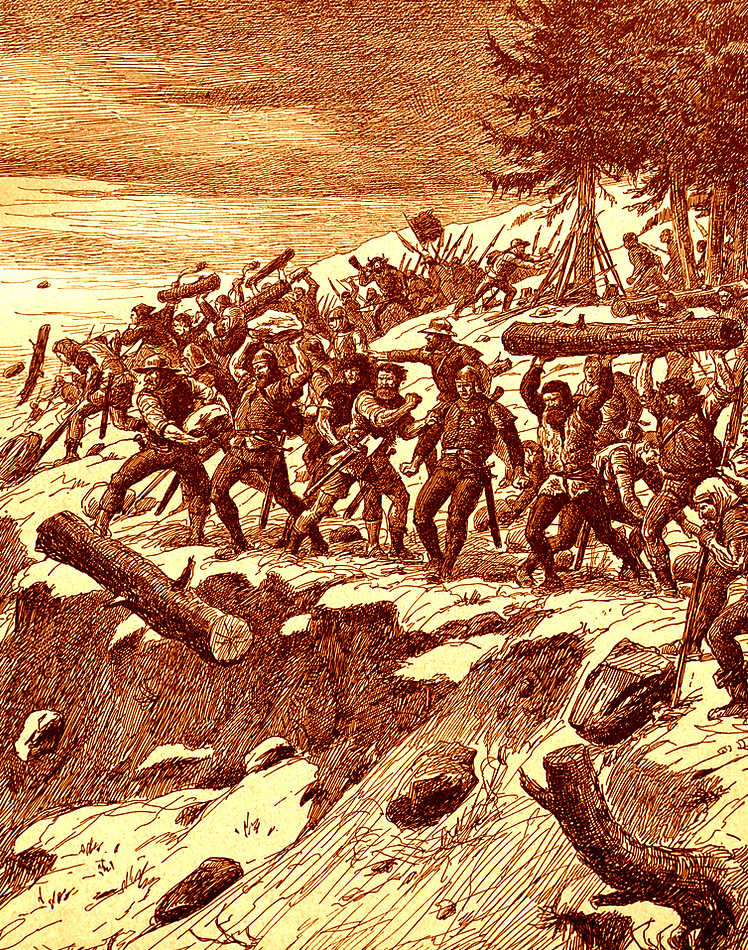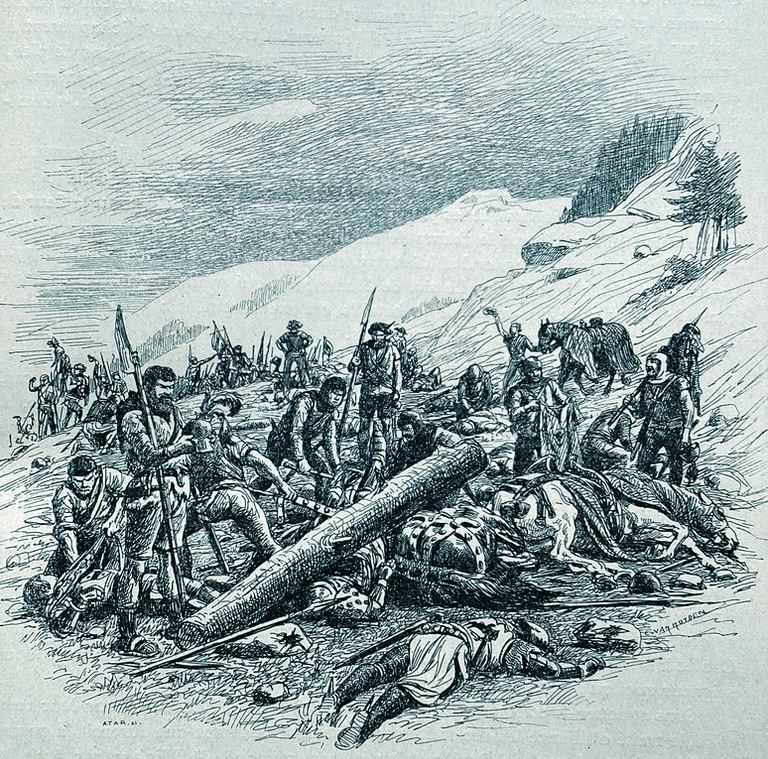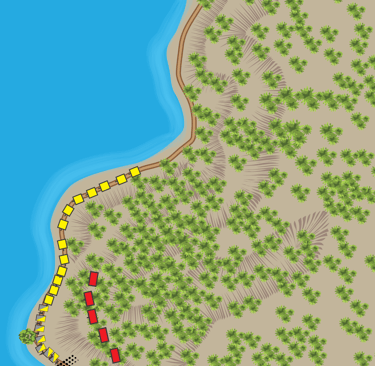Morgarten: The Swiss come of age
Picture this: the year is 1315, and a cold November morning envelopes a narrow Schwyz mountain road. Werner Stauffacher oversees the construction of a makeshift blockade, but an arrow from the mist brings a foreboding message – "Go home, you cannot win this battle and you cannot win this war." The Habsburg army looms. Werner crumples the message, stares up the road, and whispers to his men, "They're here..."
Richard Bird
2/21/20244 min read


Harsh Realities in the Holy Roman Empire
As we step into the 14th century, the political terrain of the Holy Roman Empire is unforgiving. Autonomy is the golden ticket, and success on the battlefield is the price of admission. In the western Alps, the House of Habsburg eyes the Schöllenen Gorges and the Gotthard pass, the bustling trading lifelines through the Alps. The Forest Cantons of Uri, Schwyz, and Unterwalden form a Confederacy in 1291, gaining local autonomy, a thorn in the side of Habsburg ambitions.
The Einsiedeln Abbey Saga: Cattle, Forests, and Border Conflicts
Now, let me spin you a tale – enter Count Wernher of Homberg, ally of Schwyz, with a beef against the Habsburgs over Einsiedeln Abbey. The Abbey, a cunning player, coerces farmers into cattle breeding, creating a profitable enterprise. Schwyz retaliates by settling farmers in Einsiedeln's dense forests, escalating the feud into organized cattle stealing. The dispute simmers, mirroring the volatile border conflicts of the time.
Tensions Rise: Imperial Thrones and Betrayals
Fast forward to 1313, and tensions boil over after Emperor Henry VII's demise. The Confederates refuse to back Prince Frederick the Handsome's bid for the Imperial Crown, fearing Habsburg land grabs. They find an ally in Duke Louis IV of Bavaria, who pledges to safeguard their autonomy. The stage is set for a showdown as Schwyz loses a border dispute in 1314, leading to Werner Stauffacher's retaliatory attack on Einsiedeln Abbey.
Imagine the frosty air of late 1315, where the Habsburgs, stung by the sacking of Einsiedeln Abbey, saw it not just as a territorial loss but as a smear on their reputation. Duke Leopold I was a man on a mission, determined to subdue and humiliate the Confederates, whom he dismissed as uncivilized mountain peasants. The stage was set for a showdown.
The Habsburg War Machine in Motion
Despite the late season, Leopold seized the opportunity for a rapid campaign before winter's onset. The stakes were high – nullify the Confederate threat and secure supplies for the broader Habsburg war effort against the Emperor. Leopold amassed a 4-5000 8,000-strong army at Zug. The grand plan? A two-pronged attack. The more obvious and shorter, by Arth, at the foot of the lake of Zug, the other by the narrow pass near Morgarten, farther east, along the south end of the small lake of a Egiri. What may have decided Leopold on the second route was the fact that the Schwytzers had fortified the equally narrow route with loose stone walls near to the town of Arth. These were manned by women and young boys. Countless watch fires lit up the night, creating a spectacle that would prove pivotal in the upcoming clash. The whole gave the impression of a formidable army.
Confederate Defense: A Tactical Chess Match
The Swiss, warned in good time that the Duke was taking the route via Morgarten, rallied their troops under the command of Werner Stauffacher. With approximately 2,000 men, they prioritized the defense of Schwyz. Unterwalden, having dispatched most of its fighting force to assist Schwyz, strategically fortified the pass at its narrowest point with a wall of loose stones. This was held by a small force, whilst the main force hid themselves in a wood and ravine parallel to the the road.
Duke Leopold had sent out no scouts, so when his vanguard composed of mounted knights came across the stone barrier, they halted while the center and rear kept moving forward, thus blocking the road and grassy slopes between it and the woods above. The Duke gave orders for the wall to be stormed but the trap was set, and the chaos unfolded as the Swiss Confederates emerged from the trees, hurling stones, logs, and arrows at the stunned Austrians below.
Leopold, realizing the trap, rallied his knights, but congestion plagued the Austrian vanguard. The Swiss, utilising hit-and-run tactics and the advantageous high ground, pummeled the Habsburg troops. Panic set in as the Swiss charged downhill in a dense column. The Swiss using their halberds – a short pike with a two-handed axe – hacked their way into the mounted knights, unable to fall back were forced into the lake or trampled. Those at the rear of the vanguard managed to save themselve but at the cost of disordering the infantry columns behind, who made little attempt to resist the onslaught and made off in a panic stricken crowd, many threw themselves into the lake to avoid being cut to pieces by the Swiss blades. It became butchery, the Swiss gave no quarter.
A Resounding Victory: Habsburg Rout and Confederate Triumph
Leopold had escaped by the skin of his teeth, but by day's end, around 1,500 Austrian troops, including nobles and Leopold's finest men-at-arms, lay defeated. The Battle of Morgarten showcased the stunning feat of arms by free Swiss peasants against a competent feudal army led by heavily-armoured knights. The victory signalled not only the prowess of the Swiss militia but also the birth of a new era in European warfare.


A Paradigm Shift in Warfare: The Legacy of Morgarten.
The Battle of Morgarten marked a turning point in military history. It signalled the ascendancy of infantry and the decline of cavalry dominance. The Swiss, once perceived as upstarts resisting Habsburg domination, proved that unity, strategy, and resilience could triumph over might.
The Eternal Alliance: Birth of Swiss Identity
The unity of the Forest Cantons at Morgarten paved the way for the "Pact of Brunnen" just twenty-four days later. This defensive alliance, binding Uri, Schwyz, and Unterwalden, formed the "Eternal Alliance" that became the bedrock of Swiss national identity. Over the next two centuries, the Confederation expanded, evolving into the alliance of the "Eight Cantons" that persisted throughout the Middle Ages and laid the foundation for the modern Swiss nation.
Sources:
Le Suisse sous les Drapeaux: Colonel Emile Frey
History of the Art of war: Sir Charles Oman


Some thoughts on recommended figures
Essex Miniatures: Essex Miniatures
Irregular Miniatures: Irregular Miniatures
Mirliton SG: Mirliton SG
Old Glory Miniatures: Old Glory Miniatures
Museum Miniatures: Museum Miniatures
Magister Militum: Magister Militum
Crusader Miniatures: Crusader Miniatures
Eureka Miniatures: Eureka Miniatures UK